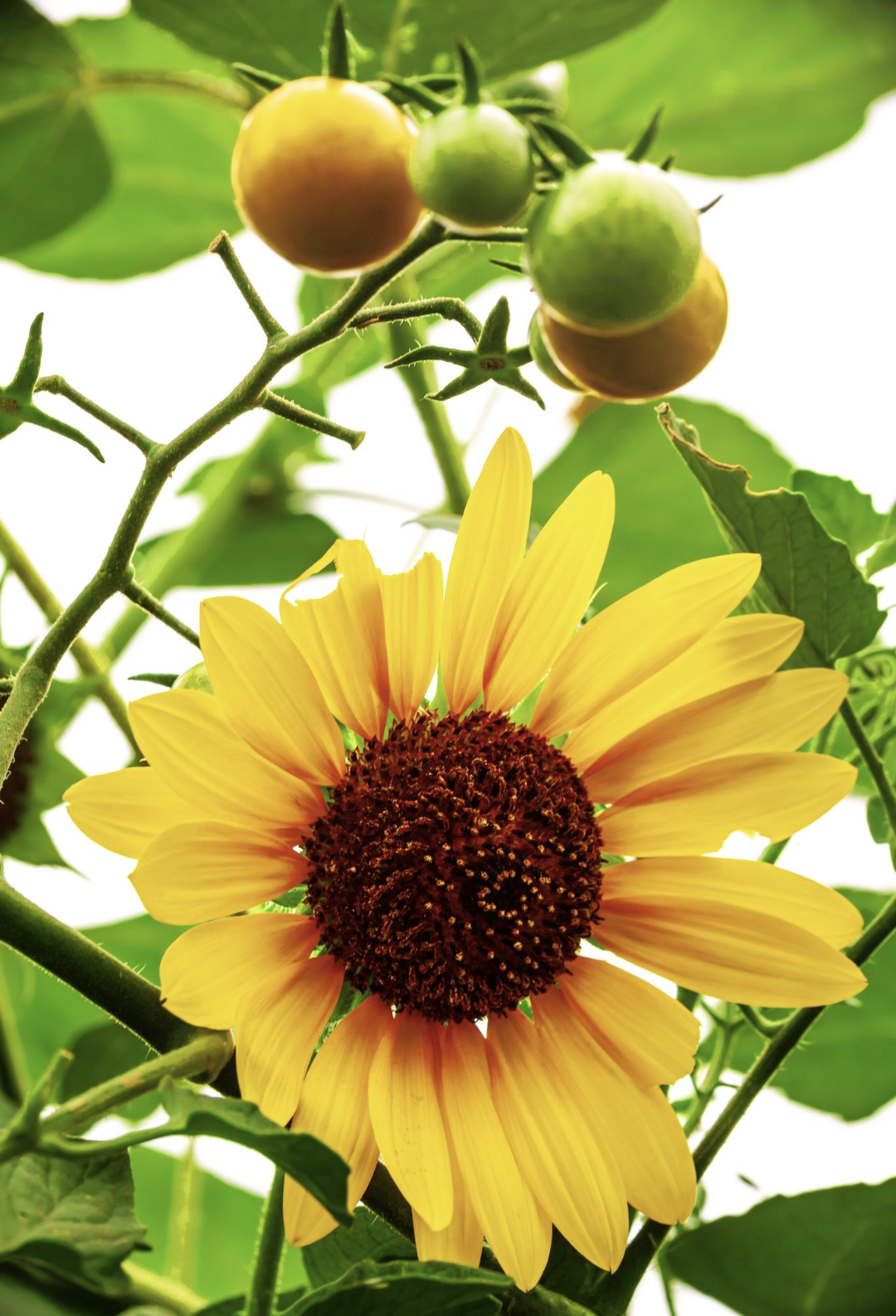Check out our summer issue!
Hans Wieland, who works & teaches at Neantog Kitchen Garden School in Co.Sligo teaches us about companion planting and all of its benefits.
Keep on reading to learn more…
Companion Planting: More Fact than Fiction
CREATE SYMBIOSIS IN YOUR GARDEN.
by Hans Wieland
I am not entirely sure if my love of strawberries and garlic (and lately roses) can be traced back to my parents, who
grew them side by side. I never asked why they did it. Only in my thirties, when I developed a real passion for growing food,
did I entertain the idea of companion planting. Guided by my wife Gaby and one of her garden heroes, Gertrud Franck,
author of the 1980 published classic “Companion Planting – successful gardening the organic way”, I followed and still follow today some of her principles “maintaining a natural balance in (our) garden by growing plants together that are
mutually beneficial.”
“Mischkultur” and No-Dig gardening
Interestingly Franck uses the German word ‘Mischkultur’, which literally means ‘mixed cultivation’ and is often referred to as ‘intercropping’. Franck also writes that “Mischkultur imitates nature”, where different plants grow together, and the soil is never left bare. Furthermore, she also promotes surface composting and mulching using the example of the forest in retaining soil fertility by continuously recycling fallen leaves and needles from trees through worms, microbes and microorganisms. In that regard, Franck was a pioneer of no-dig gardening more than 40 years ago.
What is Companion Planting?
Basically, companion planting describes the growing of different species of plants together or next to one another to the benefit of one or both. It is about the interaction of different plants growing in close proximity. While travelling through the Napa Valley in the spring of 2009, I still vividly remember the vineyards covered in yellow. On close examination, it transpired that the mustard was grown as a cover crop. “Good viticulture employs the planting of cover crops, chosen for the specific benefits they bring to an individual vineyard,” explained the farm manager. “The mustard here provides ground cover and helps retain moisture and self-seeds every year.”
Closer to home, my late friend and gardening colleague Jill Scott’s whole gardening philosophy was based on companion planting. Let’s take a look at the different ways companion planting worked for her:
• Plants may help each other directly by providing shelter from wind and sunand support. Shelter from the wind can allow pollinators to work earlier in the yearand for longer each day. Some plants need cool, moist roots, e.g. clematis. Accompanion planting of leafy groundcover will provide conditions in which they can thrive. Support can be provided by sunflowers or sweetcorn for peas and other climbers to clamber up. Climbing roses can be grown through shrubs and trees.
• Plants may help each other indirectly by improving the soil. If the soil is planted with nitrogen-fixing legumes like peas
and beans, their neighbours benefit from that.
• Plants may repel harmful insects or attract them away from other plants. An example we practise in our polytunnel is
planting calendula to attract aphids and tagetes to repel aphids. Tomatoes next to beans deceive leaf hoppers. White clover
grown with brassicas confuse the Big White butterfly and so reduces caterpillar damage. Carrots and onions together
confuse their respective flies.
• Plants may support insect populations which are beneficial to other plants. Some plants are especially good at attracting and feeding beneficial insects amongst them are buckwheat and alpine strawberries. Having a wide range of plants will encourage many pollinators, beetles, flies, bees and butterflies.
• Plants can create habitats for predators of pests. Plants which create dense shelter attract hedgehogs, and cool, moist,
shaded areas will encourage frogs, toads and newts, which will all eat pests like slugs.
• Plants may reduce the incidence of fungal diseases in nearby plants. Sprays made from garlic, stinging nettles or horsetail
reduce fungal diseases. Growing garlic and strawberries together can prevent fungal disease in strawberries. And here we are, back to my parents’ garden!
…but does it really work?
Work at Warwick University, examining the effect of growing onions next to carrots to stop carrot root fly damage, showed it
isn’t very effective. “In fact, a small effect was only noticed when we grew four times as many onions as carrots.” This ties in
with the experience of many gardeners, including myself. Using netting against the carrot fly is way more effective.
Charles Dowding, in his book “Gardening Myths and Misconceptions”, puts companion planting to the test. “I love
companion planting and do it a lot”, he writes and “have found that growing companion plants to prevent pest damage
is partly true”, but “it is correct, much of the time, to say that companion planting reduces pest damage.”
Try the “Three Sister” planting
If you want to give companion planting a go, why not try the “Three Sisters”? This most intriguing example of companion
planting was developed by Native American tribes thousands of years ago. They planted sweetcorn, climbing beans and pumpkins/squashes together, believing these Three Sisters grew best as part of a symbiotic planting.
• Traditionally the beans are planted at the base of the corn stalks, which are then used to support the growing bean stems.
Tip: Give the sweetcorn a head start before planting the climbing beans.
• The leaves from the squash shade the roots of the corn and beans and help to retain moisture. They also suppress the
weeds.
• Also, the roots from the beans are nitrogen fixers which benefits both the corn and the squash. Passed down through generations, the stories are that corn, beans and squash are sacred gifts from the Great Spirit, and the planting season is marked by ceremonies in honour of the three sister spirits. So let’s get spirited away!
Hans Wieland works and teaches at Neantog Kitchen Garden School in Cliffony, Co.Sligo
neantog.com


